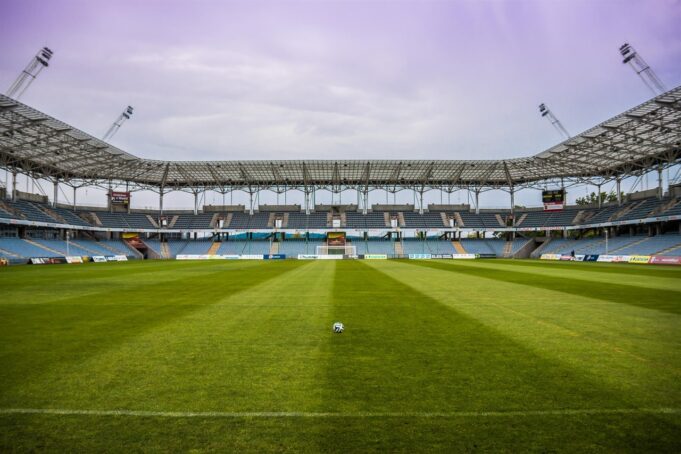By virtue of their size and intended use, sports venues use more than their fair share of natural resources. From football stadiums to basketball arenas, these facilities usually leave an oversized footprint when it comes to energy use. Field lighting, video screens and speakers put a significant demand on electric grids, while the many restrooms with sinks and toilets lead to heavy water usage. Just as other public facilities seek to incorporate renewable energy and sustainability-minded features in their design, sports venues can implement environmentally-friendly amenities. Here are some examples of these types of facilities around the nation that have embraced the use of renewable energy.
Mercedes-Benz Stadium, Atlanta, Georgia
The Mercedes-Benz Stadium is a $1.6B venue that serves as the home for the American football team, the Atlanta Falcons and the Major League Soccer team, Atlanta United FC. Built in 2017, it leverages the power of the sun through the use of over 4,000 solar panels to help keep it powered for the games and other events held there each year. Working with Georgia Power, these panels were installed not only at the stadium, but also at the car parks, entry gates and at the Georgia World Congress Centre which is also part of the same complex. An estimated 1.6M kilowatt hours of electricity is generated by these solar panels on an annual basis.
T-Mobile Arena, Las Vegas, Nevada
This multi-purpose venue is located on the Las Vegas Strip and has hosted high-profile boxing matches, mixed martial arts fighting and ice hockey games featuring the Vegas Golden Knights. The T-Mobile Arena is also a popular stop for some of the biggest musical acts throughout the year, drawing millions of visitors. This venue makes use of light-emitting diodes or LEDs to reduce energy usage. The usage of LED lighting has grown over the years due to its potential for significant energy cost savings over other types of lights. LEDs also are noted for running cooler than other types of light technology. The T-Mobile Arena was the first venue in Las Vegas to be honored with a gold certification in Leadership in Energy and Environmental Design (LEED) by the US Green Building Council.
Target Field, Minneapolis, Minnesota
Target Field is home to the Minnesota Twins, a Major League Baseball team. It contains a rainwater collection system that was specifically designed for the stadium. Water is collected from the entire site, including the stands for storage and treatment. A cistern stored under the outfield is used to house this greywater which is intended for field irrigation and stadium cleaning. Greywater refers to gently used water that has not come in contact with waste. Reusing it not only saves on water usage bills, but also reduces the chance of this water polluting other water systems. Target Field was initially awarded LEED Silver Certification and it was later recertified LEED Gold.
Levi’s Stadium, Santa Clara, California
Levi’s Stadium is home to the American Football team, the San Francisco 49ers. It is a LEED Gold Certified-venue and was the first of its kind to receive this certification. The stadium was conceived and constructed with a number of eco-friendly measures ranging from solar energy to water recycling. Among the most notable was the stadium’s 27,000 square foot green roof. 6,500 square feet of this green roof has been since converted to a rooftop farm. Over 40 crops are rotated and harvested from this farm, including herbs, tomatoes, peppers, zucchini, leafy greens and edible flowers. These crops are used for dishes served in the stadium’s clubs and eateries, as well as those served in the events hosted throughout the year.
Stadiums, arenas and other sports venues use many resources for their successful operations. With so many events and visitors, the energy footprints for these facilities are quite high. There are many renewable energy and sustainability-minded initiatives that can help reduce the impact of these facilities on our natural resources. From harnessing solar power, to repurposed water and other energy-saving elements, owners, designers and contractors have a responsibility to implement eco-friendly features into future venues.




